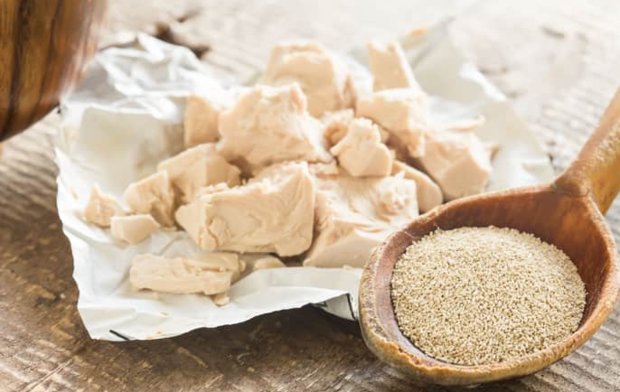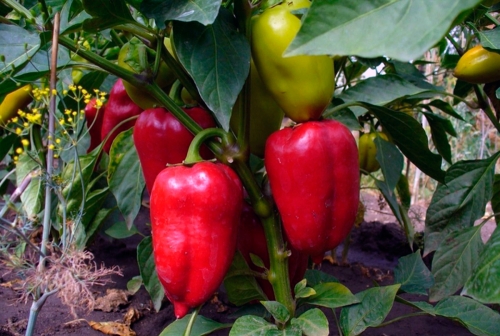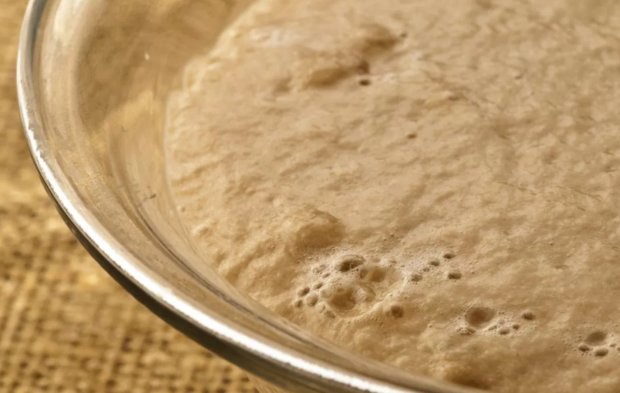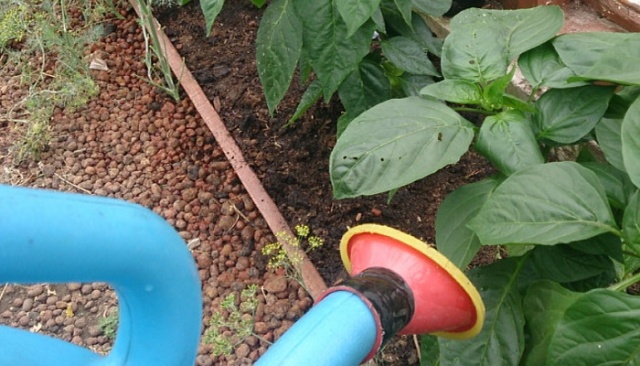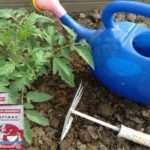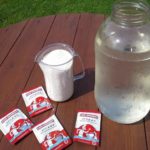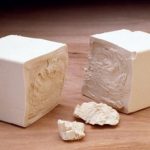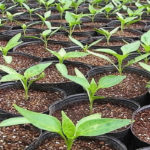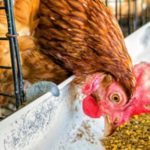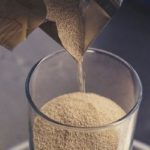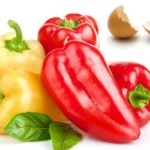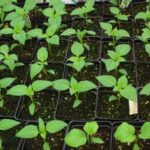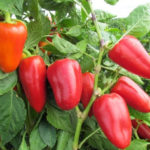Bell pepper is an important vitamin attribute of the summer diet. It contains a huge amount of vitamins. To grow a decent, strong plant that will delight you and enrich you with vitamins, you need to apply some effort, since a lack of essential microelements can affect the development of the plant. For this reason, it is recommended to feed peppers with yeast. Fresh ones are better, of course, but dry ones are also suitable. Yeast includes macro and microelements, as well as other beneficial substances that affect the growth process of the seedling.
Yeast as an effective way to feed a plant
Before the plant is in the open ground, we will go through a number of stages. We will select worthy seeds, germinate them, take care of them and observe them. And when 8-12 leaves appear on the seedling, the first buds begin to form - the pepper is ready for planting in open soil.
So that our efforts are not in vain, we need to feed the peppers. Among the many methods, it is necessary to note the simplest recipe - yeast feeding of peppers. It is necessary to supply useful substances with which the plant will fight diseases. That is, it helps to develop immunity.
Yeast contains the following main substances:
- ergosterol,
- amino acids,
- lipids,
- minerals,
- vitamin B,
- nucleic acids,
- carbohydrates.
Therefore, using a yeast solution as a top dressing, nutrients enter the plant in sufficient quantities, which will contribute to the intensive growth and development of vegetable crops.
The plant tolerates transplantation and cold weather more easily, and is completely enriched with all the necessary vitamins. And the lack of these substances threatens the plant with bacterial and fungal diseases.
This type of feeding is not recommended for potatoes, garlic and onions. And plants such as tomatoes, blue tomatoes, and peppers will be grateful to the yeast delicacy.
Yeast feeding methods
Let's look at ways to feed peppers using fresh and dry yeast.
For this we need live yeast - 200 grams, water - 10 liters. Dissolve the yeast in water and leave for a day.
It only takes a couple of hours to prepare pepper food from dry yeast. To do this, dissolve 10 grams of yeast in 10 liters of warm water. Add 10 teaspoons or 20 grams of sugar to this solution and let it brew for at least two hours. And that’s it, the yeast supplement is ready.Next, we use the resulting solution as fertilizer.
Is it possible to grow healthy and strong pepper seedlings without using fertilizer? It is possible, but they will grow slowly, the yield will be much worse, and they are also susceptible to diseases at any time, which can be avoided with a little effort. And feeding peppers with yeast is not particularly difficult, since any housewife has it in stock and this supplement is easy to prepare.
Since the germination of pepper seeds takes about three weeks, with the help of yeast we can speed up this process by soaking the seeds for three hours in this solution. After that, the seeds need to be rinsed under running warm water and allowed to dry a little.
The growth of seedlings is activated after the seeds hatch. Yeast feeding must be applied when true leaves appear on the plant. In this case, the plant will have enough necessary substances for further full development. The next fertilizing can be done in three weeks.
If desired, you can feed the plant in another month, but it is not necessary more than three times, since the seedling receives the necessary substances in sufficient quantities thanks to two or three feedings.
Yeast with ash
Let's take a closer look at how to feed the plant correctly. This type of feeding of peppers is used both in open ground and in greenhouses. To begin with, add a solution with ash or the ash itself under the root of the pepper seedling. Next, you need to water, sparing no water, so that the ash is absorbed into the ground. On the 3rd day after planting the plant in the soil, we water small seedlings at the root with a prepared yeast solution, at the rate of 0.5 liters per bush.For a more mature plant, you can use 1 to 2 liters.
To achieve maximum effect, water in warm and heated soil.
Considering the reviews of summer residents, yeast feeding gives amazing results. If you compare plants without fertilizing, they will look less healthy. Thanks to yeast feeding, the seedlings grow strong, the leaves have a juicy color and a healthy appearance. The fruits are larger and grow faster. And a rich harvest is the goal of any gardener.
Feeding the plant with yeast fertilizers in a timely manner is no less important than regularly watering the seedling. To enrich vegetable crops with potassium and phosphorus, we use a solution of wood ash, possibly with nettle infusion. In this case, we take ash - 1 part and 10 parts nettle. These fertilizers will help the pepper grow by strengthening its roots with phosphorus. And with the help of potassium, the plant becomes more resistant to cold weather and more easily resists diseases.
We add yeast nutrition after soil fertilization with ash, since yeast neutralizes the presence of potassium in the soil, while ash interferes with this process, obviously enriching the soil with potassium.
Yeast with weeds
In combination with yeast, even weeds will bring great benefits to your garden as fertilizers, however, to do this, they must first be mowed down. To do this, take a barrel, about fifty liters, put in it a bucket of cut weeds, a loaf of crushed bread and five hundred grams of diluted yeast. We fill all this with five liters of water and leave it to ferment for two to four days, depending on the weather. When our hodgepodge is ready, we spend up to one liter of it on the plants. This is how the harmful weed becomes fertilizer.
Yeast with droppings
If you have chickens, that's great.Meat is good, of course, but droppings are also good. To prepare this solution, mix in a container: two glasses of chicken manure, a third of a glass of sugar, two glasses of wood ash, and, of course, our essential yeast. You will need one hundred grams of them.
This whole mixture is infused with yeast for two hours. That's it - your feeding is ready. We dilute it in ten liters of water and use it. This way we get another yeast fertilizer.
Important feeding rules
Before fertilizing with yeast fertilizers, the following rules should be considered:
- If the plant is young, then it is enough for it to receive yeast solutions of no more than half a liter. I feed adult seedlings twice or even four times more.
- These fertilizers are good both for greenhouses and in open ground.
- It is better to water the seedlings with this solution before planting them in the ground and directly before flowering.
- If you add eggshells or ash to the soil before using yeast solutions, enriching the soil with potassium, the efficiency increases significantly.
- You need to start feeding plants in greenhouses.
- Yeast feeding recipes can be improved with the help of weeds, chicken droppings, and eggshells. Water your plants with it and it will give the soil not only nitrogen and phosphorus, necessary for the normal development of the plant, but also organic iron, vitamins and minerals.
When you water peppers with yeast food, don't forget about eggplants and tomatoes. I water almost all vegetable crops with these solutions. By watering this fertilizer 2-3 times, the plant is enriched with necessary substances for the entire ripening period.
- Open ground needs additional care. For open ground, in addition to fertilization, regular weeding is necessary.
- Dry yeast for feeding is prepared faster. If you don’t have dry ones, use live ones. Longer, but healthier (with dry yeast, the bait takes only two hours to prepare).
We should not forget that in dry climates, your plants need nutrients even more, as they become more susceptible to bacterial diseases. Feed them with yeast and the chances of a high yield will be great. I have been fertilizing my garden with a yeast solution for 8 years now. I fed it 2-3 times and I am at peace with my seedlings, since my parents also used this feeding; this product has been tested for years.

